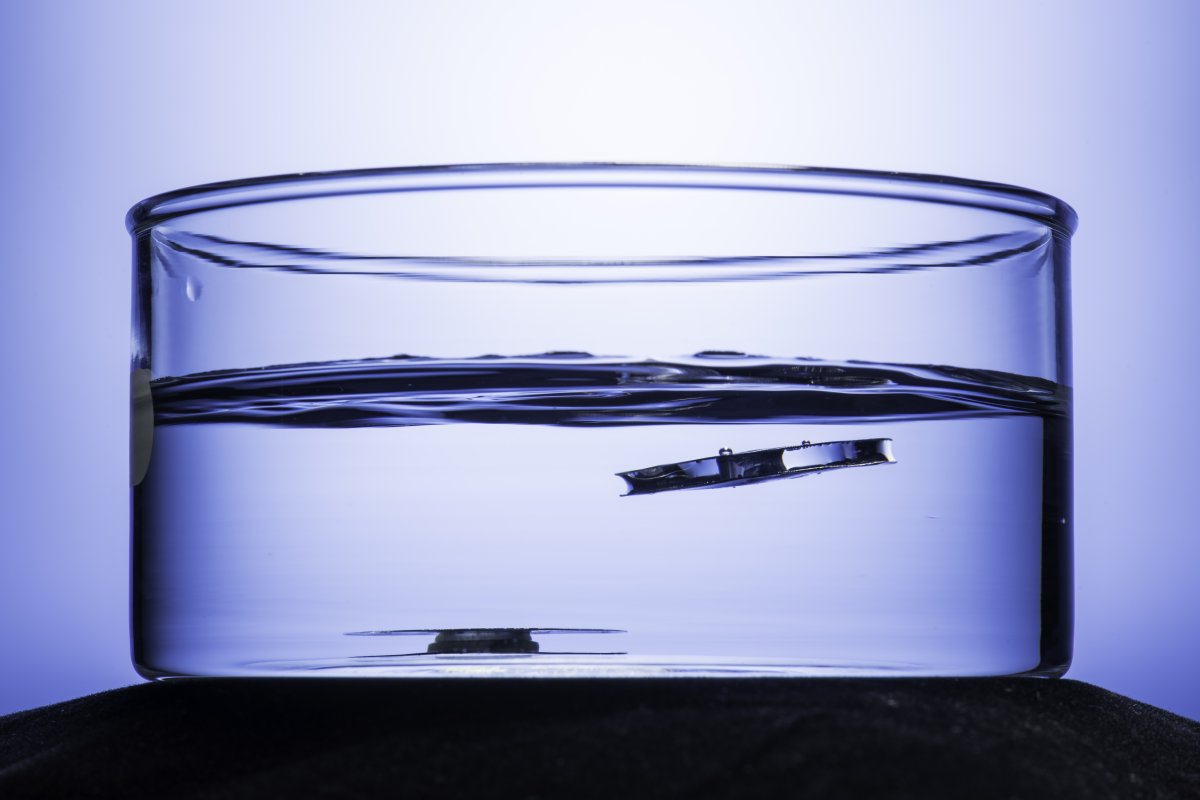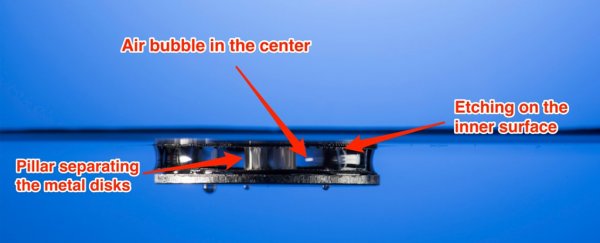It took just 2 1/2 hours for the Titanic to sink after it collided with an iceberg in 1912.
Before the disaster, the ship was said to be unsinkable thanks to the design of its below-deck compartments. But the Titanic's engineers hadn't anticipated that a disaster would puncture six of those compartments.
More than a century later, ships still aren't impervious to collisions: In May, 28 people died when a sightseeing boat and a cruise ship collided on the Danube River in Hungary. And in 2017, a US Navy destroyer collided with an oil tanker, killing 10 Navy sailors.
But new research from the University of Rochester may offer a novel way to keep vessels afloat. A team there has designed a metal array that won't sink, even after it's pierced.
"Regardless how much it's damaged or punctured, it will still be able to stay afloat," Chunlei Guo, the study's chief researcher, told Business Insider.
The project received grants from the US Army, the National Science Foundation, and the Bill and Melinda Gates Foundation, the private charity started by the Microsoft co-founder Bill Gates and his wife, Melinda.
In addition to ship construction, the researchers think the metal could one day be used for a host of other applications like cleaning latrines or building floating cities.

The metal has a giant air bubble that helps it float
Ships float by displacing water; to remain afloat, a ship must weigh less than the volume of water it displaces. When the Titanic's compartments flooded, the ship became heavier than the displaced water and started sinking.
To prevent their metal structure from suffering the same fate, the Rochester researchers had to design a method to constantly push water away.
The scientists used lasers to carve tiny grooves into the surface of an aluminium disk. These etchings trapped air, forming a protective barrier that caused water droplets to slide off the metal surface.
But if the metal was held underwater long enough, the grooves would eventually fill up with water instead of air, the researchers found. So they placed two of the etched metal disks on either end of a small pillar, with the etched sides facing inward.
They left a gap in the centre that's small enough to prevent water from entering. That creates an air bubble that helps the array to float.
Next, the researchers kept the array underwater with extra weight for two months to see whether it would lose its buoyancy. But when they took the weight off, the metal still rose to the surface.
Their final task was to see whether the array could sustain major damage. So they drilled holes in the disks and placed them underwater again. No matter how many holes they drilled, they found, the array would still float.
 (J. Adam Fenster/University of Rochester)
(J. Adam Fenster/University of Rochester)
The metal could be used to build floating cities
In the new study, Guo suggests using the metal to build life rafts, buoyant clothing, or "highly floatable ships and vessels". The weight of the ship wouldn't matter, he said, as long as the surface area of the metal was large enough to counterbalance it.
"As the area of the metal becomes larger and larger, so does the loading capacity," Guo said. That means the metal could one day even be used to build giant structures like floating cities.
"I think it's a great idea," Guo said, adding that his metal configuration was "far more robust and far more durable" than some other materials associated with floating-city concepts, like fibreglass or limestone.
Guo's research has also shown that just a few droplets of water are sufficient to rid the metal of dirt. So he's been working with the Gates Foundation to understand how these properties could improve sanitation in developing countries. Latrines made out of similar etched metal, for example, could be easier to clean.
"Keeping the metal afloat is just one of the many, many applications," Guo said.
Right now, the biggest obstacle to producing the metal in larger quantities is that the laser etching takes a while – about an hour to etch a 1-inch-by-1-inch square. But Guo said that's a problem for manufacturers to solve.
His mission, he added, is to demonstrate the science.
This article was originally published by Business Insider.
More from Business Insider:
